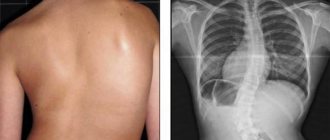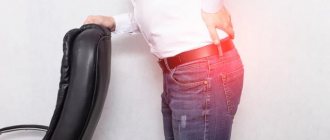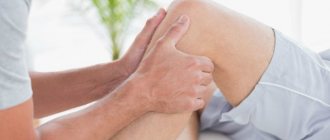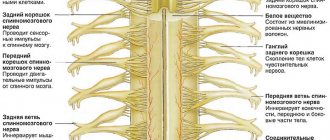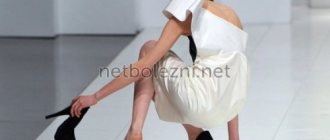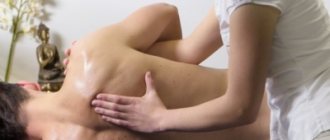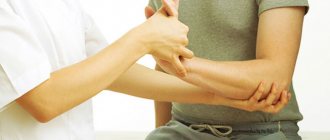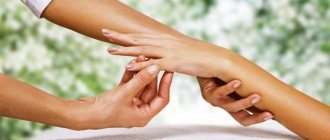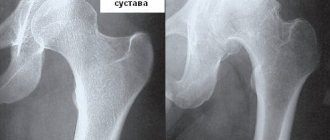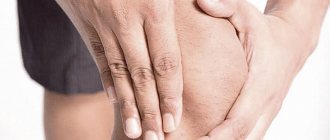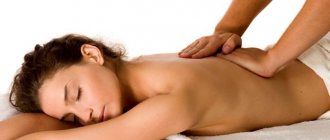- Ankle injury
- Massage for arthrosis
- Massage of the periosteum of the leg
- Bone fractures
- Features of shin massage for congenital clubfoot
- Varus deformity of the leg
- Massage for tendinitis
Ankle massage is used for many diseases of traumatic, inflammatory, and degenerative origin. It is also used for congenital pathologies. This is a universal method that can reduce pain, improve blood circulation and normalize muscle tone. It is used as an auxiliary method of therapeutic action. Massage is combined with physical therapy. It can be used in the rehabilitation period after surgery for diseases of the ankle joint.
Ankle injury
Ankle injury
Very often the ankle is injured during physical training or work. The capsule, ligaments, and tendons are injured. Tears often occur where the ligamentous structures attach to the bone. The injury can be immediate. Sometimes it develops gradually, as a result of constant microtrauma.
A common problem is bruises of the ankle joint. They develop as a result of a direct blow, most often in those who play team sports (for example, football). Hemarthrosis (accumulation of blood in the joint cavity) or reactive effusion may develop. The joint becomes enlarged, hurts, and its mobility decreases. If hemarthrosis is present, traumatic synovitis may develop.
Ankle massage cannot be the only treatment option. But it is used as an additional method to improve blood supply to tissue, normalize regenerative processes and remove swelling.
If hemarthrosis develops, treatment begins with joint puncture. The blood is removed, the joint cavity is washed. A plaster splint is often required. Then a massage is performed. His tasks:
- elimination of effusion;
- elimination or reduction of pain;
- prevention of atrophic changes in muscles.
A feature of damage to the ankle joint as a result of its excessive rotation (rotation) with a fixed foot is the frequent separation of bone fragments. In this case, the joint is deformed and severely painful. The pain intensifies with even minimal movements, including when trying to move your toes. The pathology often requires surgical treatment. In this case, massage is performed at the rehabilitation stage. It starts from the first days after surgery.
Whatever the injury, there is usually a lot of swelling in the first few days. During this period, you cannot act directly on the injured area. The massage is not performed at all, or the massage effect is carried out only on the adjacent tissues of the lower leg and foot. It should be completely painless and very gentle.
A few days after the operation or the end of the acute period of injury, they begin to massage the lower leg more vigorously. This is required to eliminate swelling, normalize lymphatic drainage, and improve blood circulation. It is advisable to do the massage in a lying position, when the patient’s leg is located on an elevation. Vigorous techniques can be used on intact tissues: stroking, kneading, rubbing. But in the problem area, the effect is carried out very gently and carefully. Often they are limited to only stroking.
Surgery
If intraosseous osteosynthesis is necessary, the surgeon uses rods; for extraosseous osteosynthesis, plates are attached with screws; and transosseous osteosynthesis is performed by inserting pins and screws. In this case, the operation is performed with a guide apparatus equipped with thin needles, which injures the skin at the injection sites.
Before the operation, the traumatologist prescribes x-rays or MRI to determine the extent of damage to the bone and nearby tissues. The image will show where the fracture is and what will be needed to treat it.
In lateral malleolus surgery, the surgeon makes an incision on the outside of the ankle joint. The specialist accesses the bone, removing blood clots, and then aligns the bone fragments to secure them with plates and screws.
In medial malleolus surgery, a surgical incision is made on the inside of the lower leg to remove small bone fragments and blood clots. The second stage is the fixation of bone fragments by introducing pins and screws.
If the deltoid ligament is not damaged and the fork remains in an anatomically correct position, then the surgeon performs an operation to realign the medial and then the lateral ankle. This sequence is necessary, since the latter is large in size.
If the fork is not positioned correctly, then osteosynthesis of the medial malleolus is performed, a surgical incision is made along the fibula, on which osteosynthesis is performed. The final stage of the operation will be the application of plaster.
Arthrosis
Arthrosis
Arthrosis is degeneration of cartilage and other intra-articular structures. The disease most often affects the knee and hip joint. In these areas, primary arthrosis is more often diagnosed, developing without previous diseases.
Arthrosis is rare in the ankle joint, and almost always it is secondary. The causes are usually the consequences of injuries, less often – inflammatory diseases. Aching pain appears, the intensity of which increases with exertion. Subsequently, restrictions on joint mobility appear. The thickening of the periarticular tissues is determined by palpation. When moving, a crunching sound is heard.
Massage is used as a symptomatic treatment method. It should not be taken as a method to cure arthrosis. Massage also does not have a significant effect on the rate of disease progression. But the correct ankle joint massage technique allows you to achieve:
- reducing pain;
- eliminating swelling;
- preventing atrophy of muscles that are less loaded as a result of a forced change in gait;
- improving joint function;
- eliminating stiffness.
Begin the massage on the toes. Then they work on the foot, performing stroking and rubbing movements. After this, they move on to the joint itself. Do circular rubbing, pinching and grasping stroking. Massage the calves, Achilles tendon area and ankles.
The ankle is in a different state in different patients at the time of the massage. For some, the pain is more pronounced, for others it is weaker. The intensity of the impact is adjusted individually. It should be sufficient to cause hyperemia of the skin. However, you should avoid using excessive force that could cause discomfort or pain.
Massage of the periosteum of the leg
Massage is used as one of the methods of treating periostitis - inflammation of the periosteum. Most often it has a traumatic origin. Severe immediate trauma or constant microtraumatization provokes an aseptic inflammatory reaction. Tension periostitis or periostopathy are more common. One is subacute or chronic. Initially, only the periosteum becomes inflamed. Then muscles, bones, ligaments, and tendons can be involved in the process.
The patient is positioned on his back. A bolster is placed under the knee. The leg bends at the knee. The doctor massages the calf muscle. He uses the following moves:
Contraindicated for whom
This type of massage has the fewest contraindications, since this method of treatment is gentle and soft. However, the doctor will refuse to perform procedures for the following diseases:
- malignant tumors of any location;
- mental illness;
- blood clots, thrombophlebitis;
- tuberculosis;
- exacerbation of chronic inflammatory diseases;
- infectious diseases;
- myocardial infarction;
- severe endocrine, cardiovascular pathologies and their complications (trophic ulcers with varicose veins, diabetic neuropathy, etc.);
- acute cerebrovascular accident;
- acute dermatological diseases.
Massage of the periosteum of the leg
Massage of the periosteum of the leg
- continuous stroking with grasping;
- kneading;
- shaking.
After this, they move on to the anterior muscle group. Direct and spiral stroking are used. Next, knead with the thumb and the base of the palmar surface of the hand.
At the final stage, they move to the back of the foot. Do rubbing with fingertips. At the end, stroking is performed with the fingertips from the knee to the ankle. The total duration of the procedure is 10 minutes.
Based on the characteristics of the clinical situation, you can massage the thigh and lower leg, as well as the knee. In this case, they start from the overlying sections of the leg, gradually moving down. The thigh is massaged, then the knee, and only after that the ankle and foot are massaged.
Positive effect
The main purpose of massage is to stimulate the restoration of affected tissues. With the help of the procedure, it is possible to increase blood circulation and lymph flow to the skin and bones. Also, giving a massage to an adult or child will help:
- eliminate acute pain in ankles and heels;
- relax the muscles;
- prepare limbs for stress;
- relax your legs;
- eliminate swelling;
- return structures to their position in case of displacement.
Important! Massage also affects nerve endings. This, in turn, has a positive effect on muscle function.
Photos before and after the procedure
After the procedure, the activity of the limb is restored. Massage helps to speed up the regeneration process.
| Before | After |
Bone fractures
The prevalence of traumatic bone fractures reaches 6-7% of the total number of closed injuries. The most common bones to break are the hand and forearm, with the lower leg taking third place. The fibula is the most commonly fractured bone.
The rate of its fusion depends on the intensity of blood supply to problem areas. Massage increases blood circulation. Accordingly, this procedure has a positive effect on regenerative processes, therefore the use of massage at the stage of recovery after bone fractures is considered pathogenetically justified.
Objectives of massage:
Bone fractures
Bone fractures
- improving blood circulation in damaged tissues;
- acceleration of nerve fiber regeneration;
- elimination of pain;
- elimination of edema;
- reduction of muscle spasm;
- elimination of vascular spasm that disrupts microcirculation;
- stimulation of regenerative processes of bone tissue;
- prevention of atrophic changes in muscles against the background of long-term immobilization of the leg;
- preventing joint stiffness;
- acceleration of restoration of normal functioning of the lower limb after injury.
At the first stage, the massage is carried out before the plaster is removed. They massage not the damaged area itself, but the tissue nearby.
The second stage of recovery begins after the cast is removed. In the first days, massage is done in the most gentle way possible. It only includes stroking and rubbing. Kneading is also possible. The damaged area is only stroked. Thermal procedures are prohibited during this period. Intensive massage is contraindicated as it may cause pain or dysfunction of the ankle joint.
In the future, the massage becomes more intense. It is combined with passive development of the ankle joint and dynamic moderate physical activity. Preference is given to frequent but short massage sessions. It is done several times a day for 2-5 minutes.
For fractures of the lower leg bones, extrafocal compression-distraction osteosynthesis using the Ilizarov apparatus is often used. This technique for stabilizing bone fragments ensures the functioning of adjacent joints. It can be combined with massage. It is carried out to normalize lymph outflow and eliminate tissue swelling. Massage begins on the third day after installation of the Ilizarov apparatus. Massage the lower back and thigh on the affected side. After device removal, some patients experience lymphedema. Then perform a suction massage. The person lies on his back with his limb elevated. The quadriceps femoris are mainly massaged.
Influence of patient age on timing and consequences
The time it takes for bone to heal depends largely on age. An adult with closed unimalleolar fractures requires 1.5 months to recover. In a child, metabolic processes go much faster, so such a simple fracture should heal within a month with proper treatment and compliance with the requirements of the attending physician.
In the elderly, everything is much worse, as the body’s condition worsens over the years. Fractures can occur due to bruises that are minor for a young person, and healing takes twice as long.
A simple closed fracture can take 3-4 months to heal, but complete healing can take more than two years. Recovery time largely depends on each person, and not just on the method of treatment.
In older people, fractures can often lead to exacerbations of chronic diseases. The consequences of an ankle fracture in people over 45 years of age are varicose veins, increased blood clotting, the occurrence of blood clots, and the appearance of numerous hematomas.
In case of improper fusion of bones, the following consequences may occur:
- lameness;
- pain in the ankle joint;
- discomfort when moving;
- arthrosis
In children after this type of injury, there is a noticeable decrease in muscle mass. Because of this, there is a difference in the length of the legs, which in rare cases affects the gait. The isolation of children required during treatment has a negative impact on the child’s psyche.
If the basic rules of the rehabilitation period are not followed, the patient may encounter the following complications:
- improper fusion;
- displacement of bone fragments;
- severe contracture;
- increasing the time of bone fusion;
- deformation of the toes;
- lameness.
Basic "don't" rules:
- It is prohibited to use electrical stimulation methods until the fragments are fused.
- Load the leg while it is in the cast.
- Massage is performed exclusively before physical therapy.
httpv://www.youtube.com/watch?v=embed/s075XYA5_Bw
httpv://www.youtube.com/watch?v=embed/51Xdyc9GaII
Periodic consultations with a doctor while the patient is in a cast are necessary; therefore, the timing of visiting the doctor and taking x-rays should not be ignored.
Features of massage
Features of the massage
1. The child lies on his stomach.
2. With one hand you need to bend your leg at the knee and hold your shin.
3. Use the palm of your other hand to press down on the baby’s leg, dorsiflexing the foot. This helps stretch the heel tendon and eliminate plantarflexion.
4. The child is placed on his back.
5. Press the shin to the table with your hand and fix it in the ankle area. With the second hand, grab the foot so that the palm rests on its plantar surface and carefully perform passive dorsiflexion of the foot. At the same time, pressure is applied to its lateral edge.
6. At the same time, acupressure is performed in the ankle joint area.
7. The next technique: the foot is fixed in the ankle joint with one hand, and with the other, with a careful straightening movement, the forefoot is moved outward.
8. Perform outward rotating movements of the foot.
Stroking, shaking techniques and vibration are useful. They allow you to reduce the muscle tone of the posteromedial part of the leg. To strengthen the weakened group of the anterior and lateral parts, more energetic techniques of massage of the lower leg and foot are used. Do rubbing, kneading and moderate effleurage.
Varus deformity of the leg
In childhood, varus curvature of the legs is amenable to conservative therapy. To normalize the position of the legs, orthopedic shoes and special exercises are used. Massage is used as an additional therapeutic method.
For varus deformity of the leg, massage is done as follows:
1. The child lies on his stomach.
2. Place a cushion under the ankle.
3. Massage the buttocks: circular or cross-shaped stroking, rubbing, kneading, percussion techniques.
4. Massage the thigh. They stroke it, rub it, knead it, stroke it again.
5. Move to the knee. Make a large number of stroking movements. Then – rubbing, pressing on the area of the lateral condyle.
6. Carry out a gentle massage of the lower leg. They stroke it, rub it, knead it, shake it. Then massage is performed in the calf muscle area. Its lateral part is massaged more intensively. The Achilles tendon is bypassed.
No. 3. What is foot massage and why is it prescribed for arthrosis of other joints?
During the treatment of osteoarthritis, it is important to support the body, help it recover, and activate its defenses. One way is foot massage, which you can do yourself. There are areas on the feet associated with internal organs. With proper pressure on them, you can improve the functioning of various body systems, activate blood flow and metabolism, which will have a beneficial effect on the condition of joints and cartilage tissue.
Foot massage can be performed at any age
